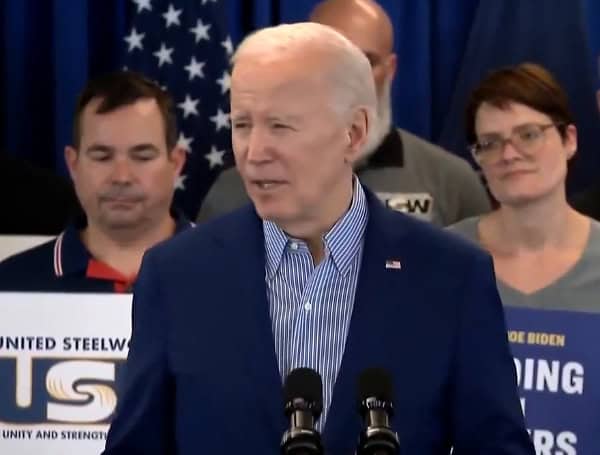
The Environmental Protection Agency (EPA) used unverified data in the process of sending billions of taxpayer dollars to states in 2023 to advance one of the agency’s signature initiatives, according to an agency watchdog.
Led by the EPA, the Biden administration is aiming to replace nearly every single lead pipe in the U.S. within about ten years. The EPA sent about $3 billion out to states to advance this initiative in 2023, but the agency used unverified data to determine how much money should go to certain states, meaning that some states likely got too much or too little given their respective levels of need, according to a memorandum published Wednesday by the Office of the Inspector General for the EPA.
The funds in question come from the bipartisan infrastructure law of 2021, known officially as the Infrastructure and Investment Jobs Act (IIJA), according to the memo’s text. The law opened up $15 billion to spend on the lead pipe replacement initiative over a period of five years.
“The EPA has been trusted to allot billions of taxpayer dollars for lead-service-line-replacements with the expectation of a needs-based allotment to states,” EPA Inspector General Sean O’Donnell said of the report. “Insufficient internal controls for verifying data led to allotments that did not represent the needs of each state, and if left unaddressed, the Agency runs the risk of using unreliable data for future IIJA lead service line replacement funding.”
The EPA disagrees with some of the inspector general’s findings, asserting that it used the best available data to determine appropriate funding levels and that adequate safeguards are in place to protect against waste. However, the inspector general’s memo paints a different picture.
“Our initial evaluation results show that the EPA did not have internal controls in place to verify the [Drinking Water Infrastructure Needs Survey and Assessment (DWINSA)] data collected and submitted. The EPA instructed states to use their ‘best professional judgment’ in reviewing lead service line data prior to submitting the data to the EPA,” the inspector general’s memo states. “The EPA, for its part, did not take reasonable measures to verify the state-submitted data to identify anomalies or discrepancies. Further, the EPA did not request supporting documentation from public water systems or states on how the systems collected the lead service line data or how the states reviewed that data.”
Inaccuracies in the EPA’s data included inflated counts of lead service lines in two states, according to the inspector general’s memo. The document did not identify those two states.
The inspector general’s office said that it met with EPA officials to convey concerns about the lead pipe replacement program, and that the EPA has taken some action to address the identified issues. However, the inspector general’s office added that the agency could do more to correct problems with data reliability and that there remains a possibility that EPA will not allot IIJA lead pipe funds according to states’ needs going forward.
The EPA did not respond immediately to a request for comment.
First published by the Daily Caller News Foundation.
Help support the Tampa Free Press by making any small donation by clicking here.
Android Users, Click To Download The Tampa Free Press App And Never Miss A Story. Follow Us On Facebook and Twitter. Sign up for our free newsletter.

